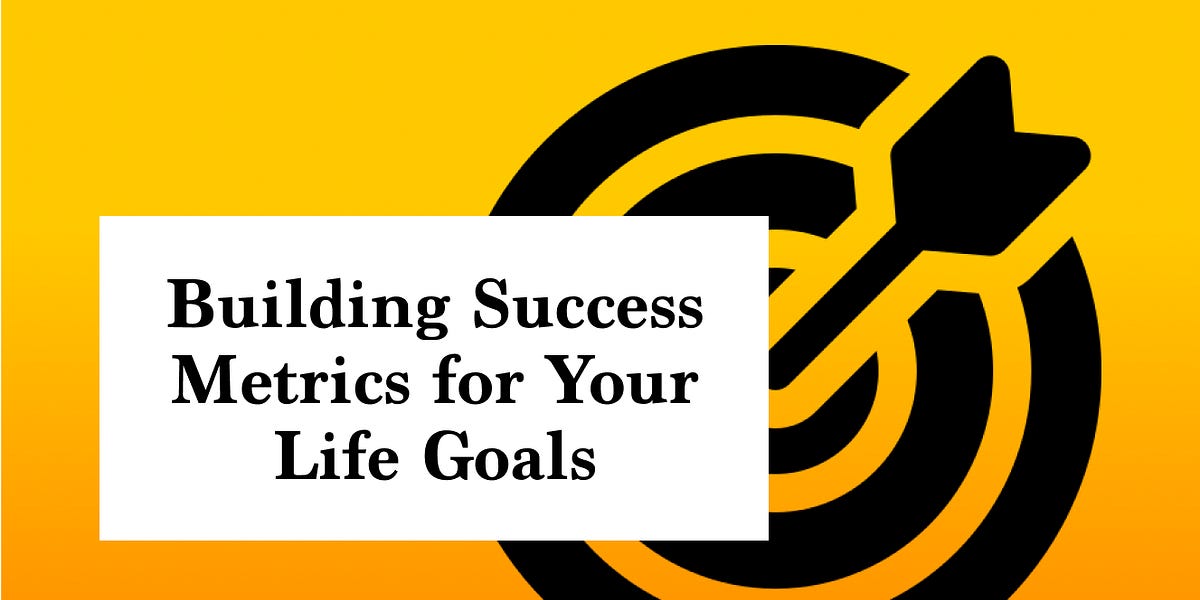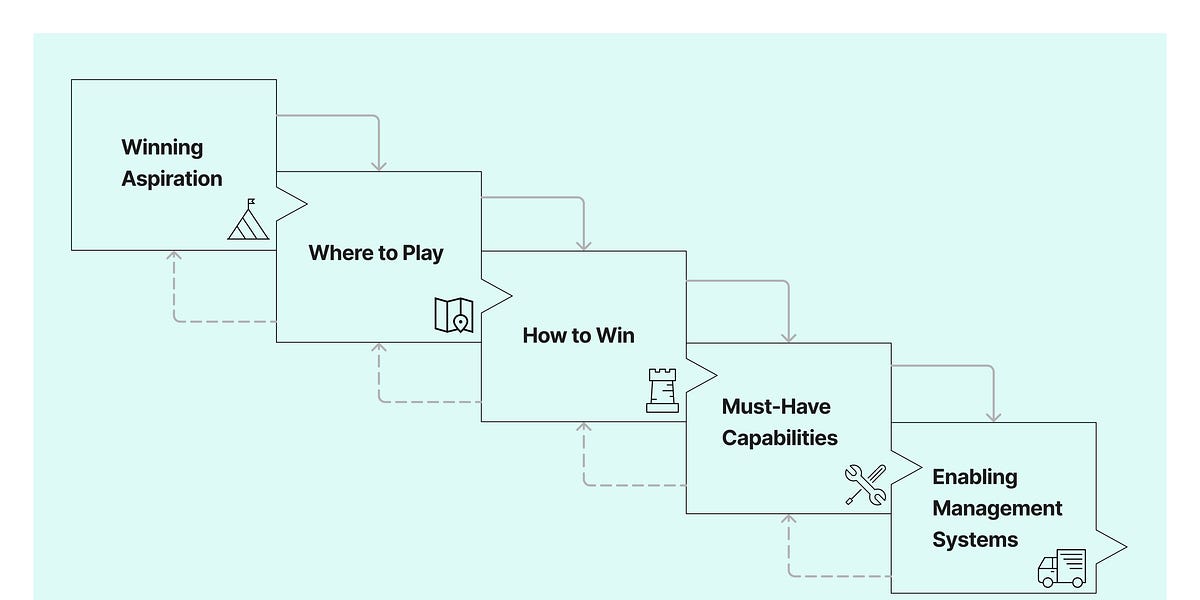How to set up personal OKRs

I've spoken about how it can be helpful to use the OKR framework for goal setting to drive growth and improvement in your personal and professional life, but it can be hard to come up with the right OKRs. So this is a guide to help you avoid some of the mistakes I've made, and curating info I've come across and found useful on the topic.
Before you start
Avoid too many Objectives
Well this really goes without saying, but do not get overly excited and set up too many objectives for yourself - you're only setting yourself up for failure. What will happen is you will be confused and overwhelmed, seeing this long list, not knowing where to start, what to prioritise, and this will cause a lot of stress and anxiety when you see yourself not making progress on those objectives. I think 3 to 5 objectives for a quarter is plenty. Any more and it'll do more harm than good.
Avoid too many Key Results
Similar to the one above, avoid setting up too many key results. I think 2 to 3 key results per objective is enough. That's what works for me though, you might be able to have more, or you might find yourself needing less. Do what works for you, and remember, life is a marathon, not a sprint.
Do not set outlandish goals
If you set up an OKR to "Expand the reach of human consciousness", and a key result as "set up a colony on the moon", you know that's highly unlikely to happen in a quarter. In a lifetime? Maybe. If that's your lifetime goal, work backwards from it, look at what you can realistically do this quarter, given your constraints, and remember life can get in the way sometimes. You want your goals to stretch you a little, else you're doing what you already have been doing anyway, but you don't want to set up goals that are completely out of reach given the time span.
Maintain Balance
I think you should set up some goals to maintain a healthy work life balance, maintain and improve your health, relationships, etc. Overemphasis on professional goals can lead to burnout or cause you to resent the very life you're trying so hard to improve. As the saying goes, all work and no play...
Avoid Perfectionism
It's better to have suboptimal so-so OKRs today, than to have perfect OKRs in some distant future. Avoid procrastinating on coming up with the perfect OKRs and you will get better over time. Do not spend more than I'd say 2-3 hrs per quarter on coming up with your OKRs. And do it within a span of 2 days, max.
Well, now that I've covered things that you shouldn't do, let's look at a guided approach to how to actually set up your OKRs.
Step 1: Think about your overall vision and purpose
What are your long-term aspirations? Remember, the whole point of goal setting is to, over time, get you closer to a long-term vision, and to help you fulfil your purpose. A few tips on how you can do this:
- Journaling - Write freely about what really matters in your life. How do you want to grow? What legacy do you want to leave behind?
- Visualisation - Think about your ideal future. What does your life look like 5 or 10 years from now? What are you doing? Who is around you? How do you feel?
- Growth - Identify areas of personal growth that are calling you. What skills do you need to develop? How do you want to challenge yourself?
- Passions - Get in touch with your innate passions. What activities energize you? What topics do you geek out on?
The key is self-reflection to gain clarity on your higher purpose and how you want to direct your life. This provides context for setting meaningful OKRs.
Step 2: Think about areas of your life you want to focus on
There are several areas of your life you might want to focus on. Here's a few for inspiration:
- Health - What healthy habits do you want to build? Nutrition, exercise, sleep, mental health, etc.
- Relationships - How can you invest in nurturing relationships with family, friends, mentors, etc.?
- Career - What skills do you want to develop? Is there a promotion you're aiming for?
- Finances - Do you want to pay off debt, start investing, or budget better?
- Personal growth - What new hobbies, skills, or experiences do you want to explore? Books to read?
- Self-care - Are there habits or rituals that help you decompress and recharge? Maybe you like painting or photography
Think about which of these areas are most important to you right now, and which ones will help you move towards your long term vision. Focus on 2 to 5 high priority ones each quarter.
Step 3: Defining your Objectives
Once you have your list of focus areas, we can move on to defining our Objectives. For each area, you will want to define 1 to 3 objectives. Your Objectives should be:
- Qualitative - Capture the essence of what you want to achieve using descriptive language
- Aspirational - Set visionary goals that excite and inspire you
- Broad - High-level with room for interpretation and creativity
- Timeless - Not confined to a single timeframe
Think about what you want to accomplish in each of your focus areas.
Some examples:
- Objective: Become fluent in Spanish
- Objective: Foster deeper connections with friends and family
- Objective: Read widely for continual learning
- Objective: Make a bigger positive impact through volunteering
- Objective: Embark on more adventures and travel
The key is to describe your ambition and intent in each focus area. The specifics will come later when defining key results.
Step 4: Define your Key Results
Break down each objective into 3-5 measurable and time-bound key results. These are the metrics that will indicate progress.
When defining your key results, strive to make them:
- Specific - Clearly articulate the exact outcome you want to achieve. Avoid vagueness.
- Measurable - Include numeric or percentage based goals so progress is trackable.
- Achievable - Ensure the goals are realistic based on other commitments.
- Relevant - Align key results tightly to the stated objective.
- Time-bound - Attach specific deadlines to achieve the result.
Some examples:
Objective: Improve physical fitness
KR: Lose 10 lbs by end of quarter
KR: Exercise 4x per week for 45 mins
KR: Lower 5K personal best by 1 minute
Objective: Reduce household expenses
KR: Eliminate $200 in unused subscriptions this month
KR: Reduce grocery bills by 30% through meal planning
KR: Call insurance providers to get 10% lower rates
Objective: Expand professional network
KR: Attend 3 industry events by June 30
KR: Schedule informational interviews with 5 new contacts
KR: Connect with 2 new work colleagues weekly
The key is quantifying your progress so you can tangibly track it over time.
You might also want to set up some stretch goals. These are goals that stretch your current abilities and resources. These are supposed to be ambitious and challenging, and might not be completed 100%, but it's kinda like the saying, shoot for the moon, and even if you fail, you will land among the stars.

Step 5: Initiatives and Review cycles
Now you have your OKRs, you need to make sure you're making progress towards them. You will want to set up some tasks, projects, or initiatives that target each of your KRs.
For example:
KR: Lose 10 lbs by end of quarter
Initiative 1: Track calorie intake daily and hit 10% average deficit
Initiative 2: Do cardio for increased calorie burn 3 times a week
Initiative 3: Eat 50gm protein per day to increase satiety and aid fat loss / prevent muscle loss
KR: Attend 3 industry events by June 30
Initiative 1: Curate a list of interesting events happening around me and choose 3 of the most interesting ones
Initiative 2: Buy tickets or register for the events I'm interested in
Initiative 3: Attend the events and talk to at least 3 unknown people at each event
So that's your initiatives.
Now, you will want to make sure you're making progress towards your OKRs, and you should do that at least monthly, preferably every 2 weeks, so you can course correct early and often. You definitely don't want to close your eyes and wait until the quarter end to review your progress.
You will want to set up a review reminder for once every other week in your todo app, update your progress on all your KRs wherever you might be tracking them, and if you notice you're behind schedule on any of your KRs, or you feel like maybe one of your OKRs doesn't make sense anymore, you can tweak your projects, or your OKRs. Remember, there is nothing stopping you from changing your OKRs mid cycle if you have good reason to, OKRs are an adaptable system and you should do what makes sense for you at any given point.
Step 6: Quarterly Review
The quarter is over, and now its time to review your OKRs. Evaluate your progress on each of your key results, and make note of any key learnings and wins. Make sure to celebrate your progress!
Step 7: Rinse and Repeat
Well, now it's time to restart the cycle. You should do this early enough that you still have basically the entire quarter to work on your OKRs.
Additional Resources
Theses are the resources I've taken heavy inspiration from for writing this post.






